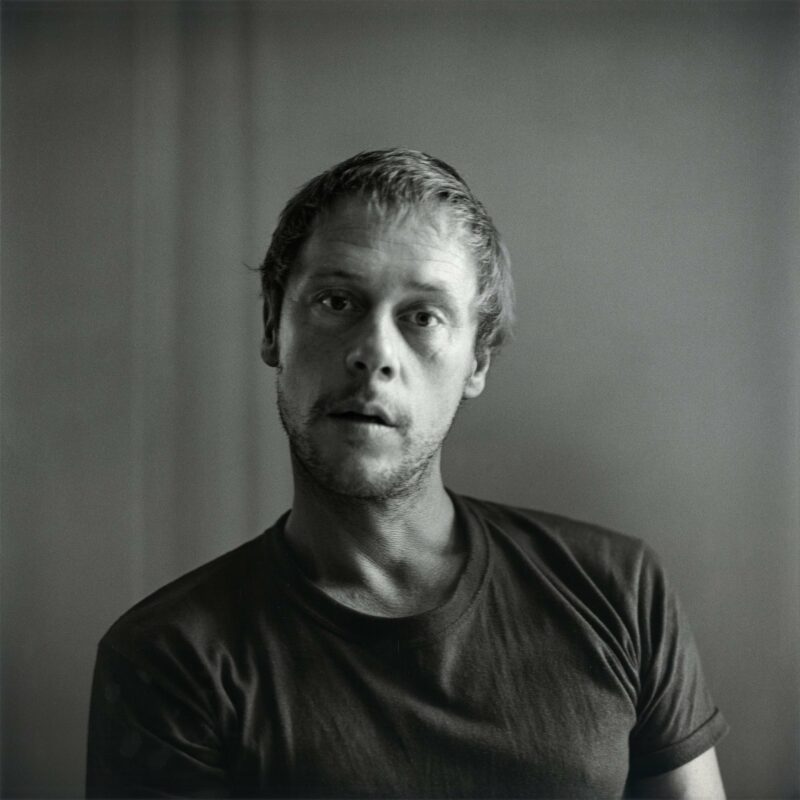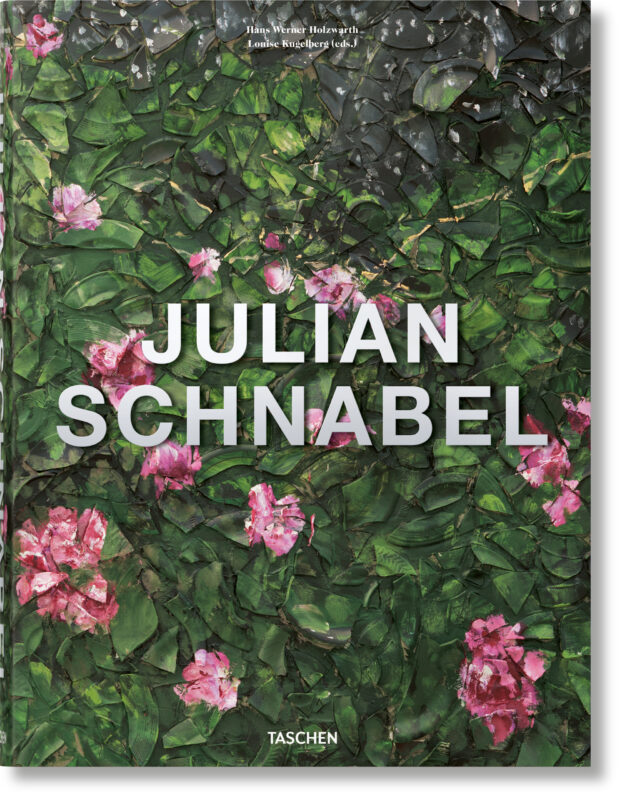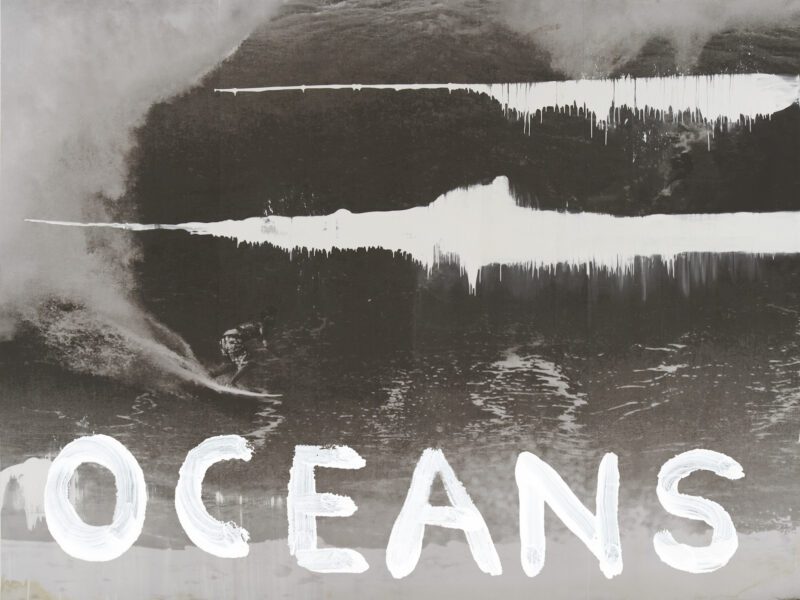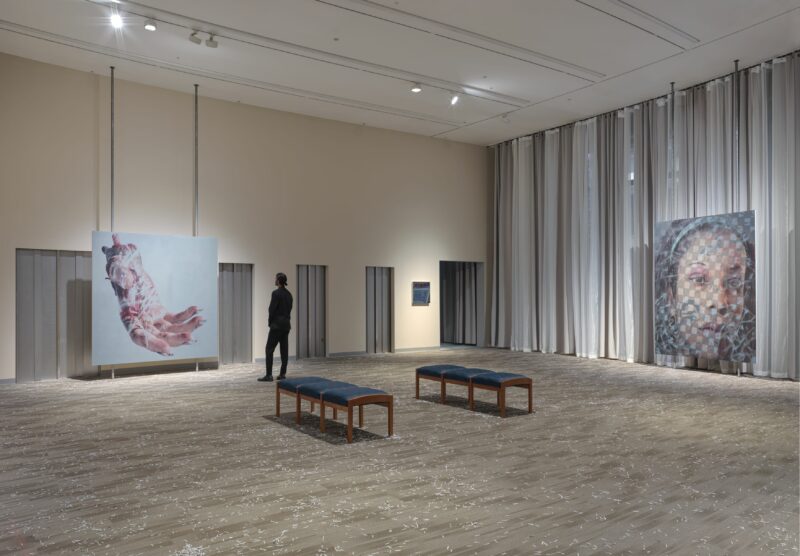Julian Schnabel: The Re-use of 2017 by 2018. The re-use of Christmas, birthdays. The re-use of a joke. The re-use of air and water. This is the first solo presentation by the artist at Pace in London. The exhibition features twelve recent paintings using imagery and an approach to painting that the artist has refined throughout his career.
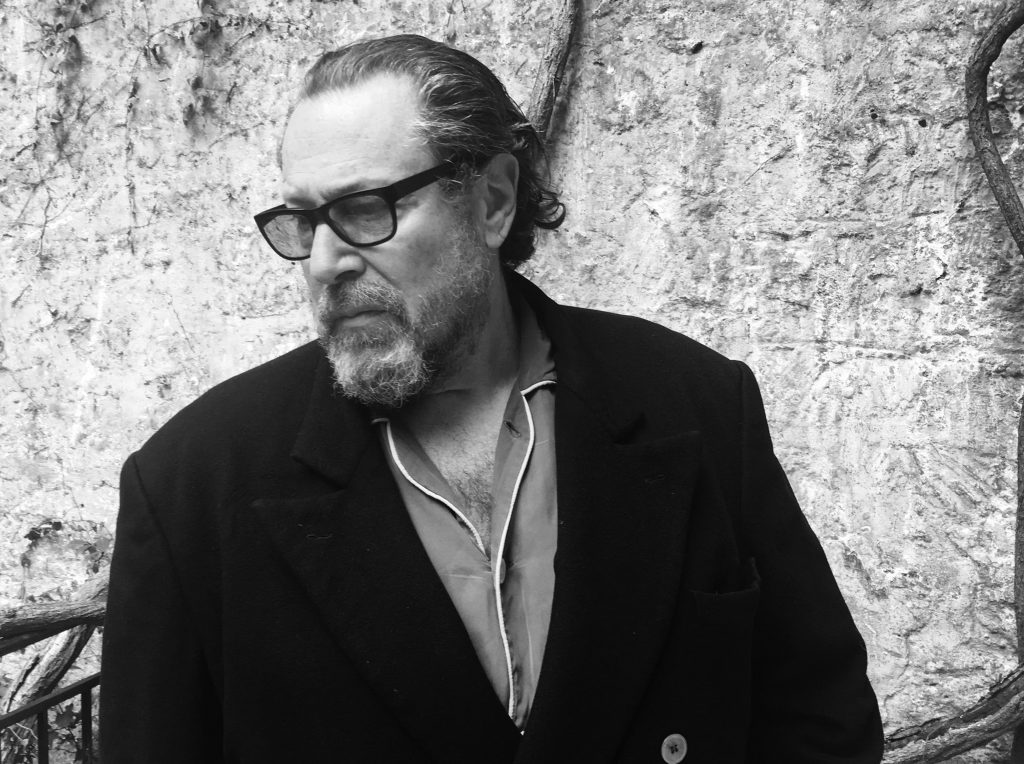
Julian Schnabel, Photo by Louise Kugelberg, Paris, France, 2016
“It is about the power to take ordinary things, and by arranging them, to produce a transcendence of their ordinariness.”
– Julian Schnabel.
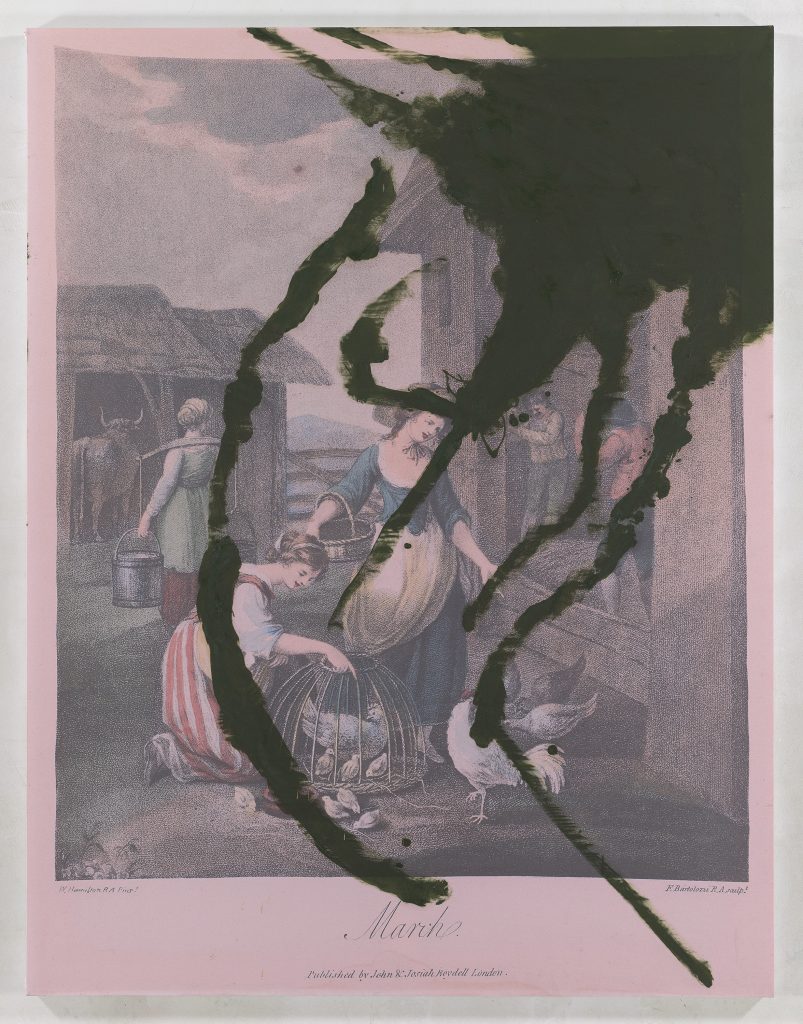
March, 2017 inkjet print and oil on polyester 88″ x 68″ (223.5 cm x 172.7 cm) Photography by Tom Powel Imaging No. 67747
Schnabel’s inspiration for the series originates from twelve calendar prints published by John & Josiah Boydell and made by Royal Academy artists William Hamilton (1751–1801) and Francesco Bartolozzi (1727–1815), whose names appear at the bottom of each image. Discovered by Schnabel in a second-hand store in New York City, the original engraved images feature agricultural scenes that depict the seasonal activities of rural England for each month.

October, 2017 inkjet print and oil on polyester 88″ x 68″ (223.5 cm x 172.7 cm) Photography by Tom Powel Imaging No. 67750
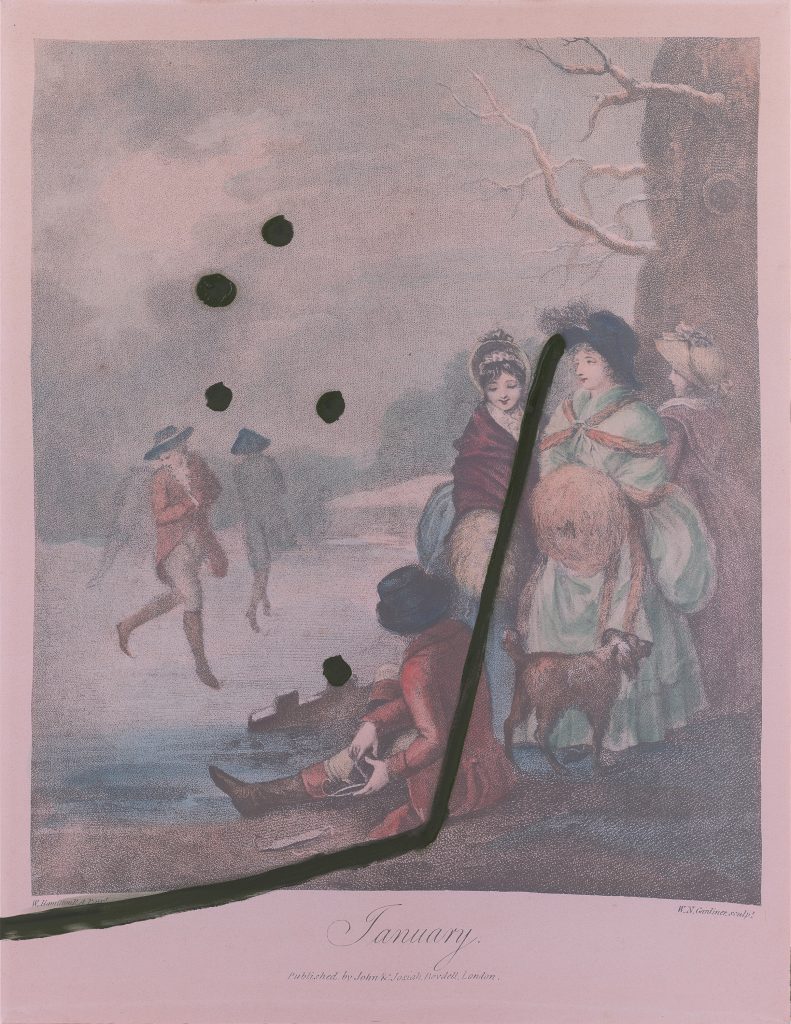
January, 2017 inkjet print and oil on polyester 88″ x 68″ (223.5 cm x 172.7 cm) Photography by Tom Powel Imaging No. 68640
After enlarging these scenes onto polyester, he painted on them, establishing a new view – new picture without losing the first – suggesting the multiplicity of vision, of awareness, of every moment. he opens a conflict that plays out in front of the viewer. “The prints are reinterpreted just as all yesterdays and todays are”, Schnabel stated.
Throughout his practice, Schnabel has used a diverse range of media and painting surfaces not traditionally used in art making. He painted these pictures in his outdoor studio in Montauk, New York, exposed to the elements. He continued, “The weather affects my paintings, stains, rain, bleached by the sun, accidents, blown by the wind, nature, at first a distraction interfering then helping.”
“There is often a sense of Julian Schnabel as a medium, through whom painting and gesture appear almost to be self-generating. Yet no matter how diverse the mark-making strategy, the paintings always bear the hallmarks and handwriting of his recognizable self.”
– Norman Rosenthal, 2011
The exhibition will coincide with the reopening of the Royal Academy for their 250th anniversary. Schnabel was elected an Honorary Royal Academician in 2009.
The Re-use of 2017 by 2018. The re-use of Christmas, birthdays. The re-use of a joke.
The re-use of air and water. Julian Schnabel 6 Burlington Gardens, London W1S 3ET 18 May – 22 June 2018
Private View: Thursday 17 May, 6–8 p.m. www.pacegallery.com
About
Julian Schnabel’s (b. 1951, Brooklyn, New York) first major solo exhibition was at the Contemporary Arts Museum Houston in 1976, followed by a solo show at Mary Boone Gallery in 1979.
Schnabel’s work has been exhibited all over the world, with shows at: The Stedelijk Museum, Amsterdam, 1982; Tate Gallery, London, 1982; Whitechapel Gallery, London, 1987; Kunsthalle Düsseldorf, Düsseldorf, 1987; Centre Georges Pompidou, Paris, 1987; Whitney Museum of American Art, New York, 1987; San Francisco Museum of Modern Art, 1987; Museum of Fine Arts, Houston, 1987; Musée d’Art Contemporain, Nîmes, 1989; Staatliche Graphische Sammlung, Munich, 1989; Palais des Beaux-Arts, Brussels, 1989; Museum of Contemporary Art, Chicago, 1989; Museo de Arte Contemporáneo, Monterrey, 1994; Fundació Joan Miró, Barcelona, 1995; Galleria d’Arte Moderna di Bologna, 1996; Schirn Kunsthalle, Frankfurt/Main, 2004; Museo Nacional Centro de Arte Reina Sofía, Madrid, 2004; Museo di Capodimonte, Naples, 2009; The Art Gallery of Ontario, Toronto, 2010; Museo Correr, Venice, 2011; J.F. Willumsens Museum, Frederikssund, 2013; The Brant Foundation Art Study Center, Greenwich, 2013; Dallas Contemporary, 2014; Dairy Art Centre, London, 2014; Museu de Arte de São Paulo, 2014; NSU Art Museum Fort Lauderdale, Florida, 2014; University of Michigan Museum of Art, Ann Arbor, 2015; Aspen Art Museum, 2016; The Glass House, New Canaan, 2017; Hall Art Foundation, Schloss Derneburg, 2017; Almine Rech Gallery, New York, 2017; and Galerie Max Hetzler, Berlin, 2018, among others.
Schnabel wrote and directed the films: Basquiat (1996), Before Night Falls (2000), The Diving Bell and the Butterfly (2007), Berlin (2007) and Miral (2010).
His work is included in the public collections of Centre Pompidou, Paris; Guggenheim Museum, Bilbao; Solomon R. Guggenheim Museum, New York; Hamburger Bahnhof, Berlin; The Metropolitan Museum of Art, New York; The Museum of Modern Art, New York; San Francisco Museum of Modern Art; Tate, London; and Whitney Museum of American Art, New York, among others.
This is the eighteenth solo exhibition of Julian Schnabel’s work at Pace, and his second since returning to the gallery in 2016. It will coincide with another solo exhibition of his works, Julian Schnabel: Symbols of Actual Life, at the Legion of Honor in San Francisco.
